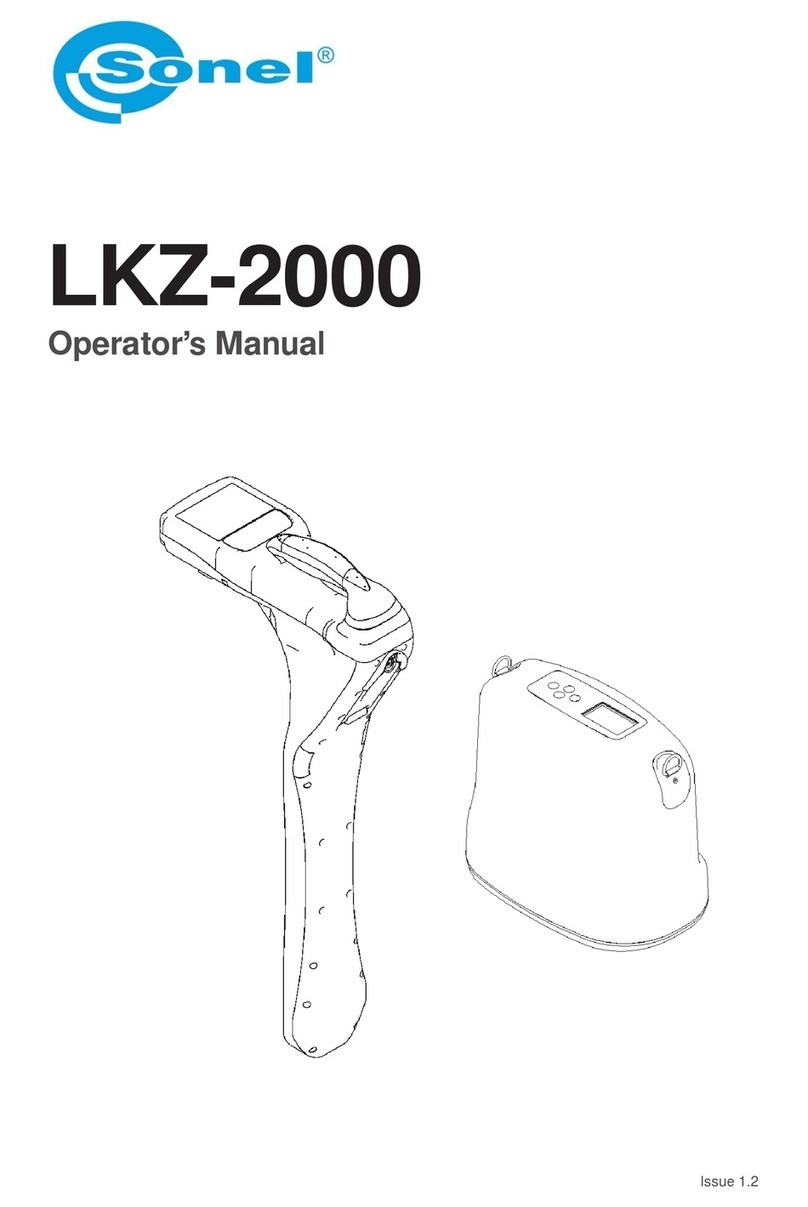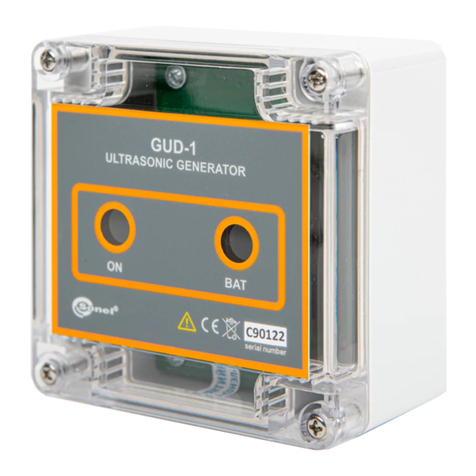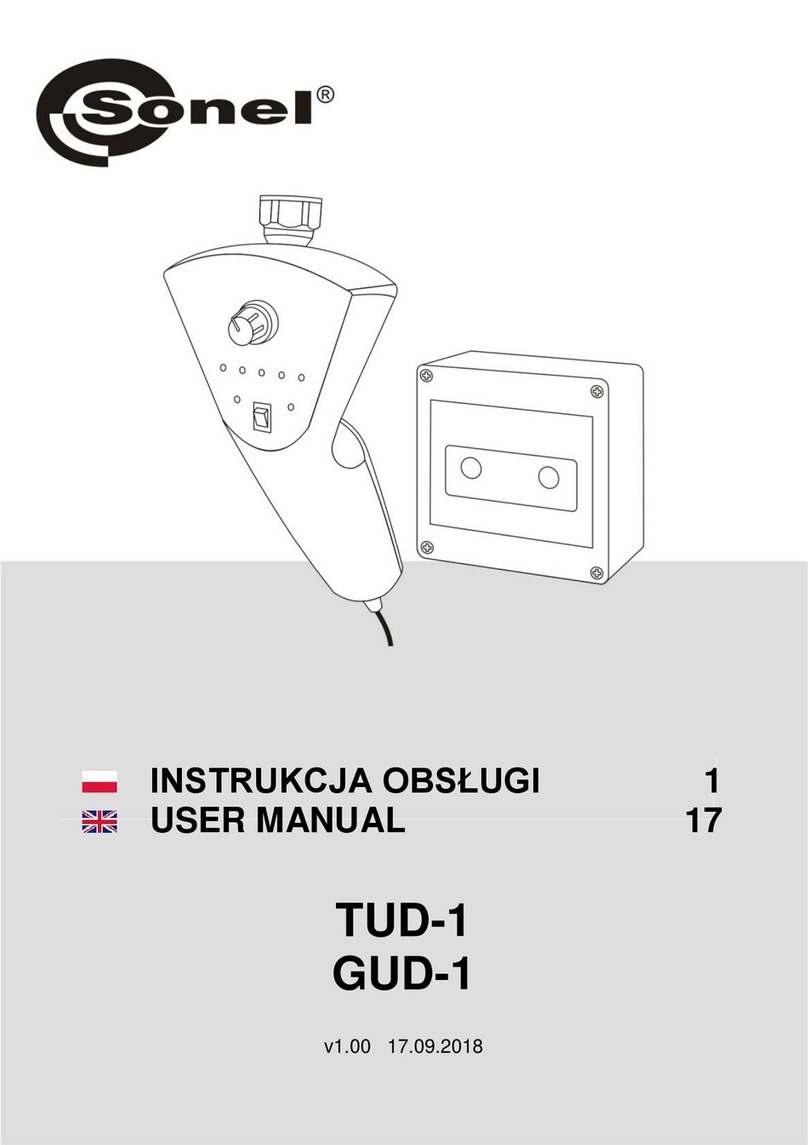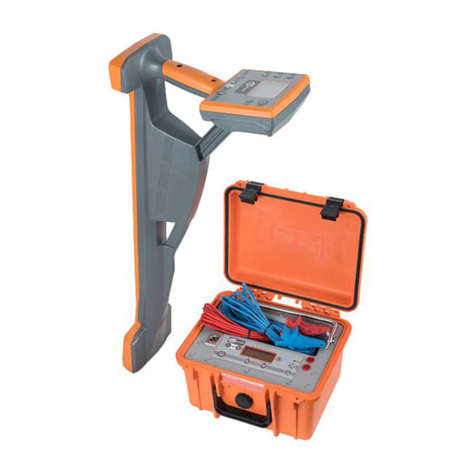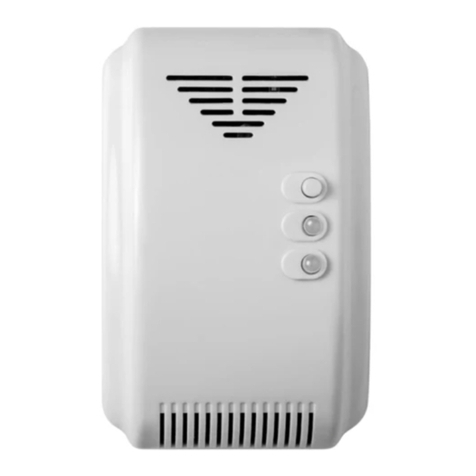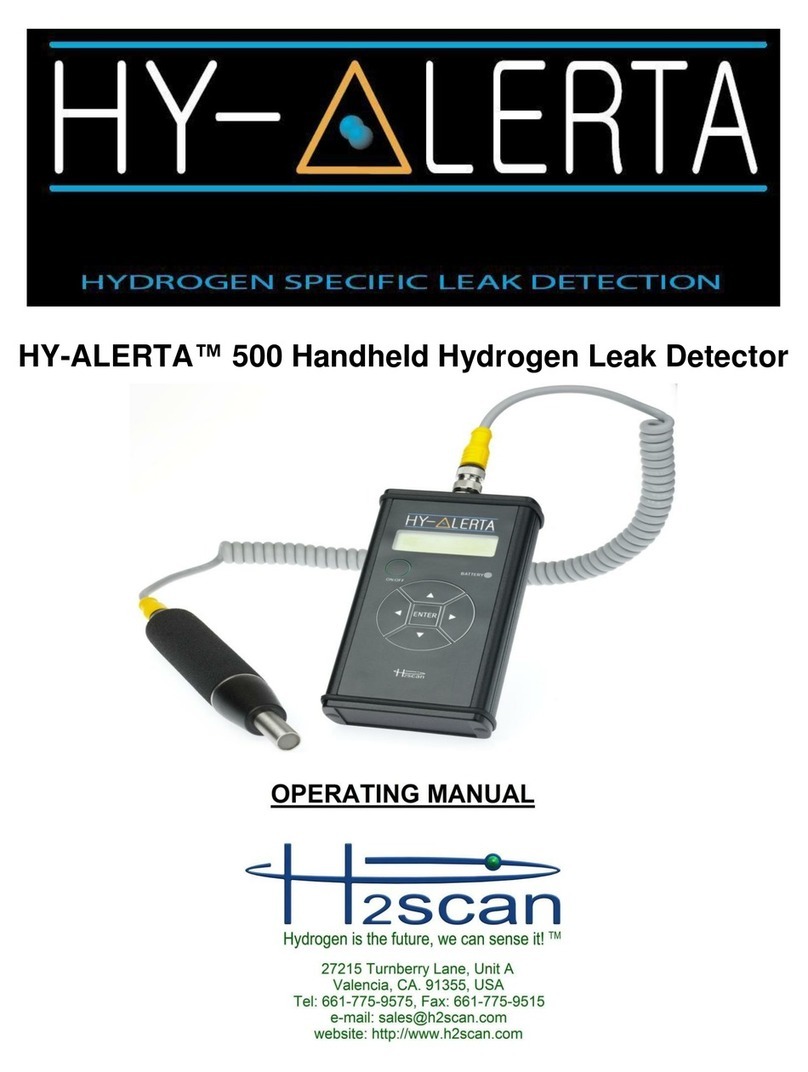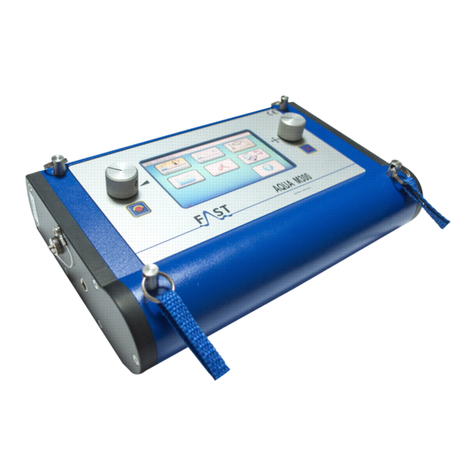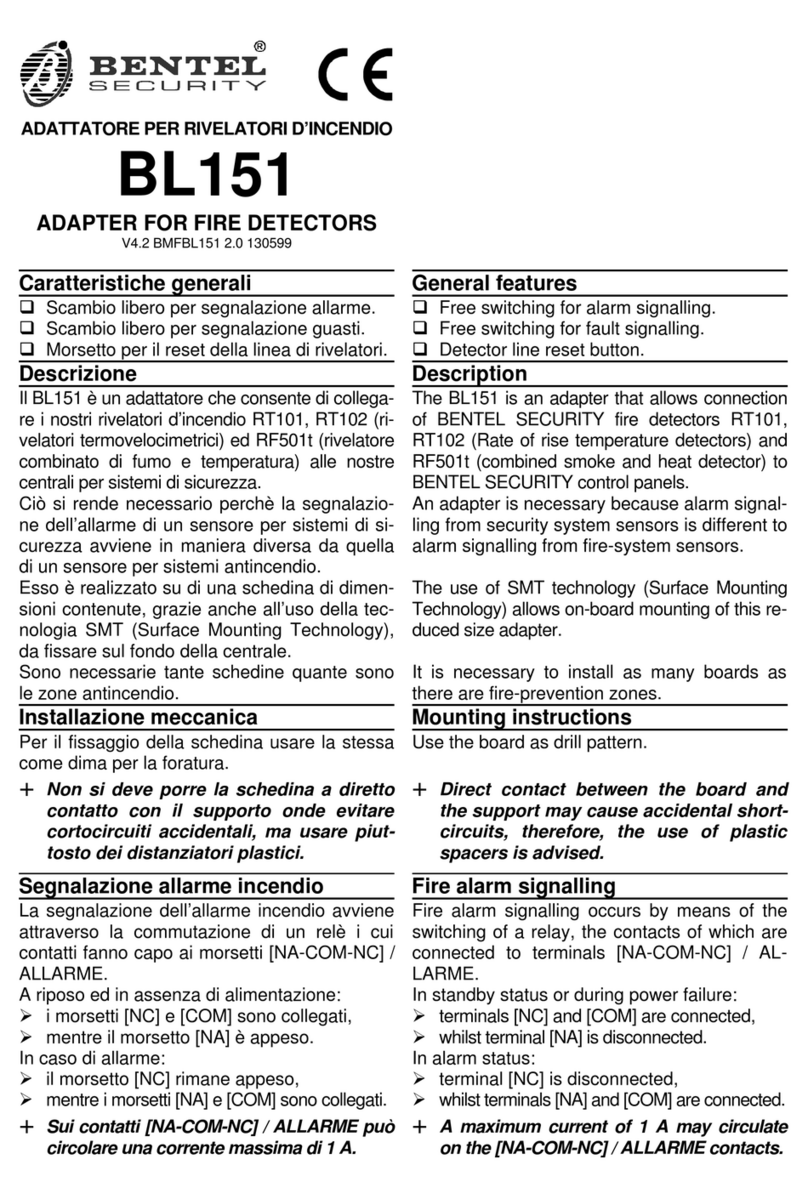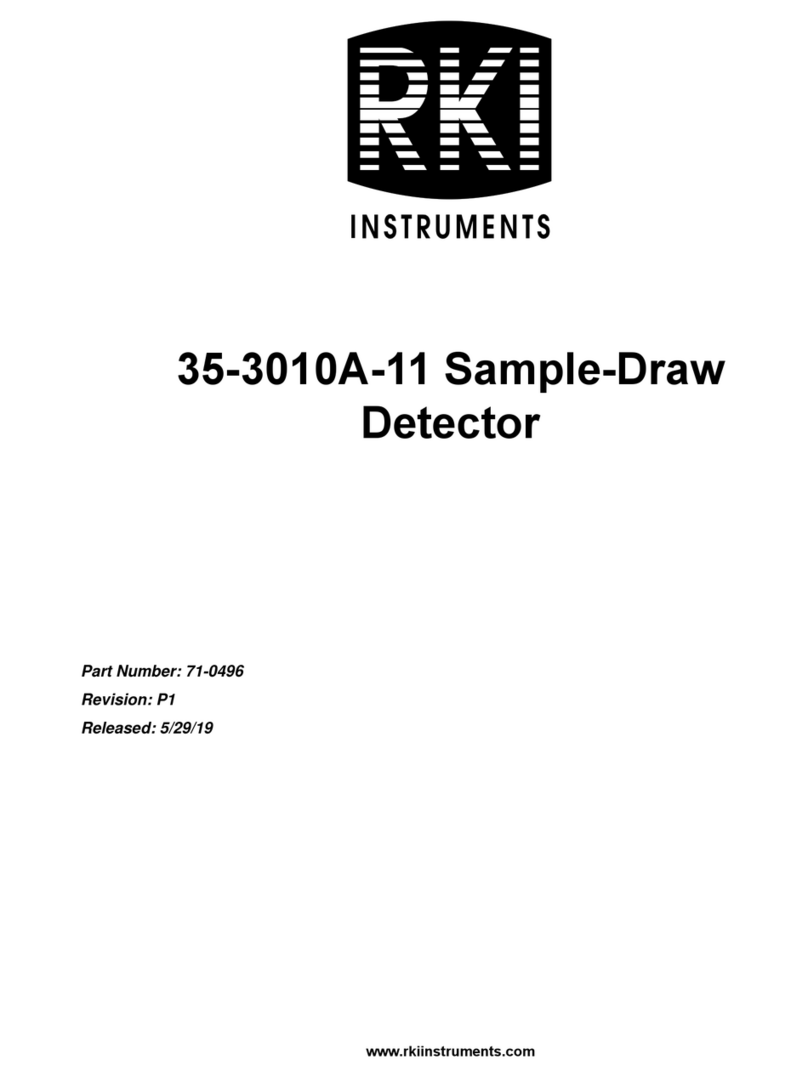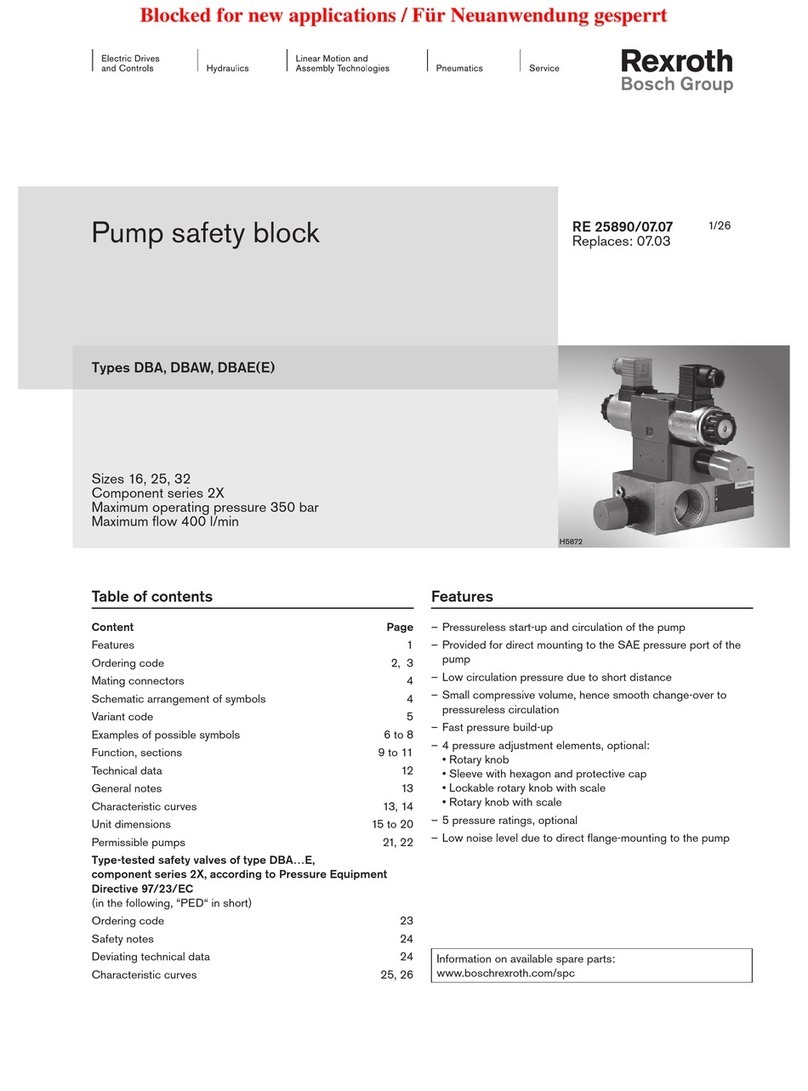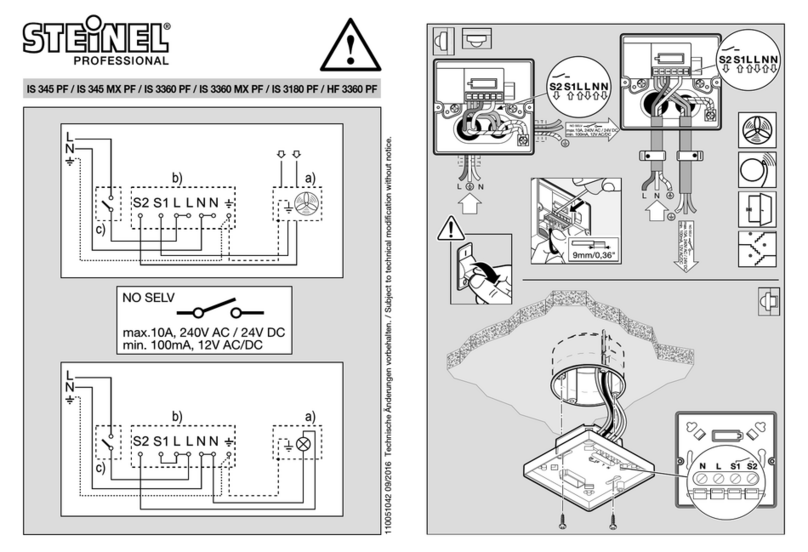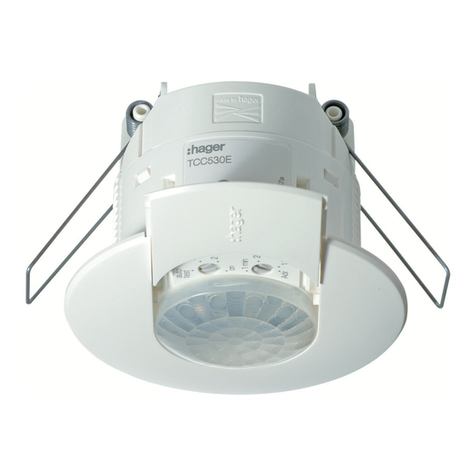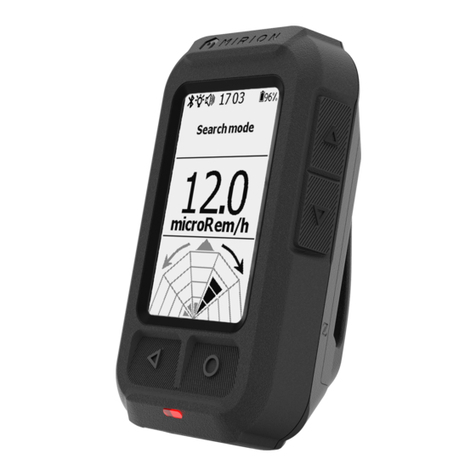Sonel LKZ-1500 User manual



USER MANUAL
CABLES AND UNDERGROUND
INFRASTRUCTURE LOCATOR
LKZ-1500
SONEL S.A.
ul. Wokulskiego 11
58-100 Świdnica
Version 1.02 01.02.2018

LKZ-1500 – USER MANUAL
2
Locator LKZ-1500 is a modern, high quality measuring device, easy and safe to use. Reading and
using of this manual will help to avoid errors in measurements and prevent possible problems when
operating the machine. Due to a continuous development of the product and the implementation of the
changes, in order to increase reliability and improve working conditions, there are slight differences
between the product and the description of its construction in this user manual.

LKZ-1500 – USER MANUAL 3
TABLE OF CONTENT
1
Safety ................................................................................................................5
2
Description of the system...............................................................................5
3
Transmitter LKN-1500 .....................................................................................6
3.1
Basic technical data ................................................................................................. 6
3.2
Design and front panel of the Transmitter ................................................................ 7
3.3
Operating principle of the transmitter LKN-1500 ...................................................... 8
3.4
Safety measures ...................................................................................................... 8
3.5
Preparing the transmitter to work ............................................................................. 9
3.6
Rules and procedures for commencement of operation........................................... 9
3.6.1
Signaling of the status and modes of operation of the transmitter....................................10
3.6.2
Direct connection – galvanic mode..................................................................................10
3.6.2.1
Connecting the transmitter to the object ....................................................................10
3.6.2.2
Signal frequency selection ........................................................................................11
3.6.2.3
Signal power output settings .....................................................................................12
3.6.2.4
Transmitter operation mode selection .......................................................................12
3.6.2.5
Voltage output limitation............................................................................................12
3.6.3
Non-contact survey current generation in communication line .........................................12
3.6.3.1
Internal transmitter inductor.......................................................................................12
3.6.3.2
Inductive clamps .......................................................................................................13
3.7
Potential failures and remedial procedure in LKN .................................................. 14
4
Receiver LKO-1500 ........................................................................................14
4.1
The main specifications.......................................................................................... 15
4.2
Power supply.......................................................................................................... 15
4.3
Design and front panel of the receiver ................................................................... 16
4.4
Principles of operation............................................................................................ 18
4.5
Proper use.............................................................................................................. 18
4.6
Selection and setting the main parameters via the Menu options .......................... 18
4.7
Operating modes of the Receiver........................................................................... 20
4.8
Locating methods................................................................................................... 22
4.8.1
Selection of operating frequency .....................................................................................22
4.8.2
Peak, null and current direction modes............................................................................22
4.8.2.1
Peak mode................................................................................................................22
4.8.2.2
Peak search with 1:4 scale........................................................................................23
4.8.2.3
The null method ........................................................................................................24
4.8.2.4
Locating with “Compass line” option..........................................................................24
4.8.2.5
Locating by current direction .....................................................................................25
4.8.3
Depth and current intensity of the utilities ........................................................................27
4.8.3.1
The indirect method of 6 dB ......................................................................................28
4.8.3.2
Locating by the utility current.....................................................................................29
4.9
Testing of ground plots........................................................................................... 29
4.9.1
Passive locating without Transmitter ...............................................................................29
4.9.2
Testing of ground plots with Transmitter LKN..................................................................30
5
Methods of locating damaged pipelines and utilities ................................31
5.1
Fault finding with leakage current........................................................................... 31
5.2
Fault finding with insulation control sensors – DKI-E or A-frame............................ 31
5.2.1
Insulation fault finding by signal drop...............................................................................31
5.2.2
The search of the insulation failure by the signal rise ......................................................32
5.2.3
Cable breakdown location ...............................................................................................33
5.2.3.1
Finding of short-circuited conductors.........................................................................33

LKZ-1500 – USER MANUAL
4
5.2.3.2
Location of shorted conductor-shield positions..........................................................34
5.2.3.3
Tracing of damaged insulation and grounding area...................................................34
6
Data storage, GPS navigation ......................................................................36
6.1
Adjustment of the Receiver to the GPS modules ................................................... 36
6.2
Track recording ...................................................................................................... 37
6.2.1
Recording with button .....................................................................................................38
6.2.2
Auto tracking...................................................................................................................38
6.2.3
Log..................................................................................................................................38
6.2.4
Distance..........................................................................................................................38
6.2.5
Transmission to PC.........................................................................................................38
7
The possible faults and troubleshooting ....................................................39
8
Maintenance and running repairs ................................................................39
9
Transportation and storage ..........................................................................40
10
Dismantling and utilization ...........................................................................40
11
Technical data ................................................................................................41
11.1
Transmitter LKN-1500............................................................................................ 41
11.2
Receiver LKO-1500................................................................................................ 41
12
Equipment ......................................................................................................41
12.1
Standard accessories............................................................................................. 41
12.2
Optional accessories.............................................................................................. 42
13
Service ............................................................................................................42

LKZ-1500 – USER MANUAL 5
1 Safety
To ensure adequate service and correctness of the results obtained, the following recommenda-
tions must be observed:
•Please read this manual thoroughly before using the set, and follow the safety regulations and
manufacturer's instructions.
•Any use of the kit other than those specified in this manual, may result in a damage to the device
and will be a source of serious danger to the user.
•The LKZ-1500 kit can only be used by qualified persons with the required electrical work permit.
Using the kit by unauthorized persons may damage the device and cause serious danger to the
user.
•The use of this manual does not exclude the necessity of observing safety rules and other rele-
vant fire-fighting regulations required for the performance of given kinds of work. It is essential to
consult a person responsible for health and safety at work, before working with equipment in un-
safe conditions, for example in dangerous atmosphere which may cause explosion or fire.
•It is unacceptable to use a tool that has been damaged and is totally or partially inoperable, e.g.
with damaged cables or stored for long periods of time in poor conditions.
•Do not leave the transmitter connected to the object unattended.
•Do not disconnect the wires from the object while the transmitter is operating.
•Repairs may only be carried out by an authorized service center.
WARNING!
The set transmitter is designed for use on non-voltage objects. Connecting to a 230 V
network may cause damage. The transmitter generates dangerous voltage up to 250 V.
Please read this manual before turning on the transmitter.
WARNING:
Disconnecting the protective conductor is a serious life threat for executives and out-
siders. Wherever possible, disconnect the mains voltage and the phase conductor
(conductors) as soon as possible. Take special care when disconnecting the protective
conductor or grounding of the neutral conductor from the system that must be live.
Ensure that no outsiders are present in the danger area. Once the location is complete,
it is essential to restore the protective earth conductor.
WARNING!
Due to the continuous development of the device software, the appearance of the dis-
plays for some functions may be slightly different than those shown in this manual.
2 Description of the system
The LKZ-1500 locator system consists of a LKO-1500 receiver and an LKN-1500 transmitter. The
device allows to track a route of the underground objects like:
•Electrical wires and power cables,
•Control and telecommunication lines,
•Lightning protection and cathodic protection,
•water and sewage installations,
•heating systems and pre-insulated pipes,
•other metal objects that can conduct electricity.

LKZ-1500 – USER MANUAL
6
3 Transmitter LKN-1500
Transmitters are designed for generating and transmitting signals in the line under study, and to-
gether with the LKO receiver, it allows to locate the track, determine the burial depth of object, as well
as the location of insulation damage, e.g. cables or pipelines. Current output waveform for LKN-1500
is modified sine wave.
The transmitter can cooperate with any LKO receiver that has the same frequency. Transmitters
are powered by integral maintenance-free sealed lead-acid accumulators. External 12 V 7 Ah DC
source is allowed for use to provide the required power.
Supply voltage self-check system of transmitter indicates its reduction in the range from 11.0 to
10.5 V. Transmitters are switched off automatically in case of voltage drop below 10.5 V down to
10.0 V. The transmitter’s accumulator charging mode is activated automatically when connecting
power supply unit. Transmitter provide accumulator overcharge protection. The transmitter can oper-
ate in 3 signal generation modes:
a) continuous wave generation;
b) pulsing generation ⅔(signal generation – 1 sec, pause – 0.5 sec);
c) pulsing generation ½ (signal generation – 0.5 sec, pause 0.5 sec).
3.1 Basic technical data
Tab. 1 Basic technical specifications of LKN-1500
No
.
Parameter
Value
Notes
1.
Output signal fre-
quency
single-frequency 273, 1024, 8928,
32768 (33 kHz) ±2 [Hz]
double-frequency
(basic frequency)
1024 (↑↓),
8928 (φ)
2.
Power output setting range, W from 1 to 10 In steps 1, 2, 5
and 10 [W]
3.
Voltage output,
max, V
without limitation 200
transmitter maxi-
mum voltage out-
put is 130 V at a
frequency of
32768 Hz;
with limitations 30
4.
Uncertainty of output voltage ±(5% m.v. + 5
numbers)
transmitter fault is
not rated at fre-
quencies of 8928
and 32768 Hz.
5.
Load conditioning
range at maximum
power output on fre-
quencies, Ohm
273 and 1024 [Hz] from 30 to 3000
8928 [Hz]
from 30 to 2000
double-frequency
6.
Output current, no more than [А] 0,6
7.
Current output indication error ±(5% m.v. + 3
numbers)
transmitter fault is
not rated at fre-
quencies of 8928
and 32768 Hz.
8.
DC power supply range, V from 10,5 to 15,0
9.
Power consumption if using 12 V external pow-
er supply, max., [W] 22
10.
Continuous, Pulse operation mode at maximum
power output in normal conditions on fully
charged internal accumulator, hrs, minimum
6
In pulse mode at
maximum output
power

LKZ-1500 – USER MANUAL 7
3.2 Design and front panel of the Transmitter
Fig. 1 Design of the LKN
-
1500 transmitter
Fig
.
2 Front panel of LKN
-
1500
transmitter
11.
Insulation strength between “Output” sockets
and enclosure in normal conditions, alternate
current at a frequency of 50 Hz, V
1500
Alternating current
of frequency 50
[Hz]
12.
Insulation resistance between “Output” sockets
and enclosure (voltage 2500 V) in normal condi-
tions, minimum, МΩ
20 At the voltage
2500 [V]
13.
Overall dimensions, maximum, mm 275 х250 х180
14.
Transmitter weight, maximum, kg 4,9
Notes:
m.v.– Measured value;

LKZ-1500 – USER MANUAL
8
Tab. 2 Description of the front panel transmitter LKN-1500. Description of transmitter display
No. Description
1.
Transmitter on / off button
2.
Power supply unit connector for integral accumulator charging or operation
from a boost battery
3.
Power output decrease button
4.
Power output increase button
5.
Indication of power output
6.
Current output (A) or voltage (V) indicator
7.
The symbol of internal inductor’s signal
8.
The symbol of signal passing through “Output” sockets
9.
External power source status indicator (symbol)
10.
Internal accumulator status indicator (symbol)
11.
Displayed parameter selection button: value of the output current [A] or
voltage [V]
12.
Transmitter output signal condition
13.
Output” sockets for load connection
14.
Socket for connection of grounding probe
15.
Generation mode” button is used to set continuous wave or pulsing gener-
ation mode
16.
Option button for signal transmission: induction or direct galvanic connec-
tion
17.
Indication symbols of internal accumulator charging process
18.
Double-frequency signal type selection button
19.
Double-frequency selection indicators
20.
Signal frequency selection button
21.
Indicators of specified frequency rates
3.3 Operating principle of the transmitter LKN-1500
Operating principle of the transmitter is based on DC source energy conversion to AC signal.
So, the transmitter microprocessor produces control pulses. Microprocessor also controls transmit-
ter’s conditioning by load to provide maximum power output. The transmitter operation and status
information is presented on front panel display.
3.4 Safety measures
The transmitter shall be operated in compliance with electrical safety requirements by
skilled personnel who learned this operation manual and have the required electrical safety access
qualification level.

LKZ-1500 – USER MANUAL 9
WARNING!
During operation voltage output level across “Output” sockets and connected circuits may
reach 240 V. In operating condition avoid contact with conductive parts connected to the
transmitter.
WARNING!
The transmitter shall be switched off during connection to and disconnection from the exam-
ined line or object.
WARNING!
Before operation check the status of “Output” sockets, the surface around them, and clean if
needed. Do not use the transmitter and its component parts in the event of mechanical dam-
age. During operation prevent moisture getting into the transmitter panel and/or power supply
unit and use it in accordance with the instruction manual.
3.5 Preparing the transmitter to work
Accumulator shall be charged when the transmitter is switched off for longer time. Following
these guidelines will improve the battery life.
WARNING!
It is required minimum 8 hours to charge empty accumulator. Charging time period shall be in-
creased to 12 hours to reach full capacity of accumulator.
WARNING!
For extended life time of accumulators you shall:
- charge accumulator at a temperature from +10 to +30ºС;
- limit the "depth" of discharging (do not allow to discharge completely);
- charge accumulator straight after discharge;
WARNING!
store the transmitter at a temperature from -15 to +30ºСand recharge accumulator once in 3
months.
To charge the battery, connect the power supply plug to the 12 V socket of the transmitter (see
pos. 2 in Figure 2). Power supply unit shall be connected to 230 V mains. The battery charging pro-
cess is shown as a scrolling icon
„ ” (See p. 17 in Fig. 2). When the battery is fully charged, the icons are continuous still and the dis-
play is periodically illuminated.
After charging is complete disconnect power supply unit from 230 V mains and then from the
transmitter.
3.6 Rules and procedures for commencement of operation
The transmitter shall be maintained at operating temperature within two hours in case it was
stored at a different temperature before.
WARNING!
Do not expose to direct sunlight in summer season in order to avoid transmitter over-
heating.

LKZ-1500 – USER MANUAL
10
Switching on and off the transmitter is done by pressing the on / off button marked with the sym-
bol (see p. 1 on fig. 2). After switching on, the transmitter sets the minimum output power and fre-
quency at 273 [Hz], but the output voltage level is not limited. Transmitter operating modes, internal
battery status, or external power supply are indicated by the relevant indicators and are explained in
Table 2 of this manual.
3.6.1 Signaling of the status and modes of operation of the transmitter
Indi
cator
position in
Figure 2
Indicator status
Transmitter status and operation mode
p. 8
Flashing light The process of transmitter’s load conditioning.
Continuous light Transmitter stabilized the power output with the load.
P. 15
Continuous
green light Continuous normal operation of the transmitter.
Flashing green
light Pulse normal operation of the transmitter.
Flashing red light
at a frequency of
1Hz
Transmitter overheating. Signal is not generated and is re-
sumed only when the transmitter is cooled down, but no sooner
than in one minute
Continuous
glowing red
The transmitter “Output” sockets carry external voltage. The
transmitter might have been connected into live circuit.
p. 10
Constant glowing Internal battery voltage in normal.
Flashing half of
the battery sym-
bol
Internal accumulator voltage level ranges from 11.0 to 10.5V
which indicates deep discharge of accumulator battery.
The battery
symbol flashes
The internal battery voltage is below 10.5 V and after 1 minute
the transmitter will be switched off (auto shutdown).
!
p. 9
No signal Voltage of external power supply in normal range.
Continuous
glowing
The voltage of the external power supply is between 11.0 V and
10.5 V. The external battery is probably discharged.
Pulsing flashing
Internal accumulator voltage level is below 10.5V and the
transmitter will automatically shut off in 1 minute (automatic
shut-off).
p. 17
Moving from top
to bottom Accumulator charges.
Constant lighting
of all three icons Accumulator charged.
Tab.3 Status and operation mode light indication
3.6.2 Direct connection – galvanic mode
3.6.2.1 Connecting the transmitter to the object
WARNING!
Load connection to the transmitter output is allowed only when the transmitter is switched off.
The transmitter direct connection to the examined live line is prohibited. .
Socket shall be connected to ground pin driven into the ground at a distance of 5-10 m from the route
of the object. To increase the survey current, ground pin shall be earthed at a maximum depth.

LKZ-1500 – USER MANUAL 11
Connect the blue wire to the output socket of the transmitter, shown in figure 2 p.14 ( ). The other
end of the cable, using a blue crocodile, should be fastened to a pre-grounded grounding probe. Use
the red wire to connect the output socket of the transmitter, marked in Figure 2 p.13, to the conductive
part of the object (see fig. 3).
In the search for unearthed object, for example, gas pipeline or cable, it is preferable to earth the
object at far end (see Figure 4) – it will provide maximum survey current. Otherwise, current will leak
off the ground through isolation capacitance and its level will decrease. As a result it will reduce pos-
sible search range.
Fig. 3 Connection the transmitter to the
metal pipeline.
Fig. 4 Connection to cable armour (shield), to
one of the cords in case of unshielded cable or
to metal section of insulated pipeline.
There are other methods of transmitter connection to objects or cables depending on the purpos-
es, for example, in case of insulation fault tracing. For more information see the section on Working
with Frame A.
3.6.2.2 Signal frequency selection
Turn on the transmitter and set the desired output frequency, power, and operating mode . In addition,
with the button (see p. 16 in Fig. 2), select the signal output from the transmitter's output sock-
ets, and the symbol (p. 8 in Fig. 2) will appear on the display. Selection depends on particular
search conditions, current task and requires acquisition of practical skills by an operator.
Signal frequency selection is made by pressing the button “F1” and is frequency-loop : 273
→1024 →8928 →33k →273, etc. (see position 1 in Fig 2).
Double frequency signal is made by the "f2" key with an indicator "↑↓" for double frequency
1024 [Hz] and "φ" for double frequency 8928 [Hz].
Low signal frequency in the wet ground allows for maximum search range and minimum signal
routed to other communication lines or objects (“273”, “526” or “1024”). But at low frequencies the
noise influence of power current and signals in adjacent lines is stronger.
High frequency (“8928”) in the dry ground allows for higher search range and lower power-supply
disturbance. Higher frequency “33k” is recommended when searching for insulated cables and lines
with far ends not connected to the ground. In this case, the survey current generated as a result of
ground leakage through distributed isolation capacitance is higher. In addition, high frequency is pref-
erable during wire-free connection of the transmitter to the objects or lines of communication.
However, it should be borne in mind that at high frequencies there is a stronger penetration of the
signal from the transmitter to adjacent lines (objects), which may results in wrong search directions.
When the transmitter is operated in combination with LKO1500 receiver, at high density of com-
munication lines, you can use current direction sensing function. The current flow from the transmitter
(direct current) or to the transmitter (let-through adjacent line return current). In this regard, set the
transmitter signal output at double frequency of 1024 [Hz] signaled "↑↓". Set operating frequency
“1024” for the receiver. Setting the output power of the signal.

LKZ-1500 – USER MANUAL
12
3.6.2.3 Signal power output settings
You should correlate the settable power, desired search time, power supply source parameters
and estimated search range.
Increase or decrease power output by pressing the buttons (pos.3 or pos.4 Fig.2.)
Indicator (pos. 5 Fig 2) shows power output value . Indicator on position 6 (pos. 6 Fig 2) shows volt-
age output (V) and output signal current value (А). Parameter can be selected by pressing the but-
ton (pos.11 Fig.2).
If the desired current value cannot be obtained, check the grounding quality and / or change the
signal frequency for the ground type. If the transmitter cannot provide the specified power, it is auto-
matically limited to maximum possible value at the given load. In case of high load circuit resistance
when minimum power cannot be generated (for example, open load), power level indicator shows: “-
1”. Also power output limitation may be resulted from insufficient accumulator capacity.
Generally load conditioning time does not exceed one minute. If conditioning is longer, check
connections and ground quality, change power output or switch to continuous wave generation mode.
3.6.2.4 Transmitter operation mode selection
Continuous wave and pulsing generation modes are available for the transmitter. Continuous
wave generation mode is recommended when determining position of communication lines, its depth
and during insulation troubleshooting. Pulsing generation mode is recommended when searching for
communication line under high noise conditions or at low signal received, as it’s easier to determine
your own signal by typical pause in this mode. Also the transmitter power consumption is reduced.
Generation modes from continuous to pulsing are switched by pressing the button (pos. 15 in
Figures 2) and displayed in time with output signal (the green diode is green) by indicator (pos.12
Fig.2).
3.6.2.5 Voltage output limitation
Mode of voltage output limitation to 30 V is activated for safety reasons during operations. For exam-
ple, it is reasonable to limit voltage output level during cable cord selection in case of body contact
with a cord.
To activate voltage output limitation, hold down the button (pos. 15 in Fig,2) and press “-“
(pos. 3 in Fig.2). On the display you will see indicator “V” flashing . In case the transmitter cannot
provide preset power, it is automatically limited to maximum possible value at the given load.
To deactivate voltage output limitation, hold down the button and press “+” (pos. 4 in
Fig.2).
3.6.3 Non-contact survey current generation in communication line
If the transmitter cannot be directly connected to communication line in galvanic mode, for exam-
ple, no access to conductive parts of communication lines or they carry voltage, the survey current
can be generated in the examined lines from induction coil or by Sonel N-1 inductive clamps.
3.6.3.1 Internal transmitter inductor
The transmitter with coil produces alternating magnetic field in the ground that generates current
in the line of communication. The higher is survey current, the lower is resistance of the closed circuit
being a part of communication line. Earthing of communication line ends is the best decision as
shown in Figure 5. If there are no earth conductors, the survey current level is lower as its strength is

LKZ-1500 – USER MANUAL 13
determined by capacitive current through line insulation. The current level is being higher with a rise in
frequency.
During operation in inductive mode transmitter shall be installed vertically along an axis of the exam-
ined communication line (Figure. 5).
Fig. 5 Induction current excitation in the localized object
For operation from internal inductor press the button (pos. 16 Fig.2) , symbol (pos. 7 in Fig.2) will
be displayed. Maximum outputs of internal inductor are at a frequency of 33 [kHz].
It should be noted that:
•the current level is substantially lower when it is generated in communication line by using
transmitter rather than direct galvanic connection;
•transmitting signals are being routed to all adjacent current-conducting lines what may results
in wrong search directions;
•the closer transmitter is located to communication line, the higher is the current level generat-
ed in communication line.
3.6.3.2 Inductive clamps
In case of access to communication line, for example, high voltage insulated live cable comes out,
it is reasonable to use N-1 inductive clamps. Due to better magnetic interaction with line circuit, they
provide higher survey current generation and eliminate sending signal to adjacent communication
lines. Maximum diameter of communication line for N-1 is 52 mm.
WARNING!
Do not connect conductive clamps to live bare conductors.
Current resistance shall be as low as possible in order to provide maximum current in the exam-
ined communication line circuit. It should be noted that the higher is operating frequency, the higher is
the level of the current generated in insulated and/or unearthed line when using clamps.
The clamps should be connected to the output sockets of the transmitter, while keeping the markings
on the wires. The cable marked with the letter "E" with the grounding outlet of the transmitter (p.14
fig.2) and the cable marked with the letter "H" with the load socket (p.13 fig.2). Grasp communication
line with clamp (Fig. 6). On the transmitter panel press the "f1" key to set the frequency from
available, i.e. 1024 [Hz], 8928 [Hz] or 33 [kHz].

LKZ-1500 – USER MANUAL
14
Fig. 6 Induction of excitation voltage in localized object with N-1 clamp
3.7 Potential failures and remedial procedure in LKN
No
.
Type of failure
Possible cause
Remedial procedure
1.
Transmitter start fail-
ure or accidental
shutdown
Discharging accumulator Charge accumulator
Accumulator failure Replace accumulator at the author-
ized Sonel service.
2.
Accumulator fails to
charge within a given
period
Accumulator failure Replace accumulator at the author-
ized Sonel service.
Power supply unit failure Check power supply unit
Tab.4 Potential failures .
4 Receiver LKO-1500
The LKO-1500 Receiver paired with the LKN-1500 transmitter is designed to locate and trace ca-
ble and pipe lines (hereinafter referred to as the “utilities”).
However, there is the possibility of self-operation of the receiver, without aid of the transmitter, i.e.:
•on the 50 [Hz] and 550 [Hz] frequencies it locates cable lines by detection induced signal of
the industrial frequency current;
•on the 100 [Hz] and 300 [Hz] frequencies it locates utilities and finds areas of damaged insula-
tion of pipes by detecting Electrochemical protection signals;
•on the 550 [Hz] and 1450 [Hz] frequencies it locates the areas of ground fault of overhead
lines by detection current harmonics;
•in the “SB” (sound band) mode it locates utilities by re-radiated broadcasting and telephone
signals within the frequency band from 48 Hz to 14 kHz.
•in the “Radio” modes it locates utilities by detecting induced broadcasting signals within the
frequency band from 10 kHz to 36 kHz.

LKZ-1500 – USER MANUAL 15
4.1 The main specifications
Table. 5 The main specifications
No Parameter Value
1.
Rated values of operating frequencies
(with Transmitter); sensitivity on the se-
lected frequency
Frequency, [Hz] Sensitivity, min,
µA/m*
273
491, 526
982, 1024
2000, 2048
8440, 8928, 9820
10000, 32768 (10k, 33k)
500
300
150
50
25
5
2.
Rated values of operating frequencies
(without Transmitter), Hz 50, 100, 300, 550 and 1450
3.
Dynamic range of input signals, dB, min 102
4.
Bandwidth for each operating frequency,
max, Hz
at the level of minus 3
[dB]
at the level of mi-
nus 60 [dB]
9 24
5.
Utility depth, m from 0,10 to 6,00
6.
Operating frequency current in the utility from 10 mA to10,0 А
7.
Admissible error of the depth of single ex-
tended utility line, max
±
{[4+0,3h(h+1)]%+0,1 m},where h is a meas-
ured depth
8.
Admissible error of location of a single line
at the depth of 2 m, min ±0,1
9.
Operating frequency voltage at the
SENSOR jack input od 0,01 mV do 1,70 V
10.
Sensitivity at the SENSOR jack input at
the signal-noise ratio of 6 dB, mV, min 0,05
11.
Limits of admissible main error of voltage
measurement, max, % + dgt ± (3% v.m. + 3 digits)
12.
Input resistance at the SENSOR jack in-
put, MOhm 1
13.
Overall dimensions, max, mm 700
×
300
×
140
14.
Continuous operation under the normal
conditions with full battery, min, h 5
15.
Weight, max, kg 1,8
*
Rated for the “Broad peak” method. The signal
-
noise ratio is 6 dB.
The Receiver provides signal gain adjustment with the step of 6 dB (each step provides doubled
gain).
4.2 Power supply
The batteries may be replaced without breaking a seal. The Receiver provides signal gain ad-
justment with the step of 6 dB (each step provides doubled gain).
The Receiver is powered form a rechargeable Ni-Mh battery with the rated voltage of 6 V and capacity
of 2000 mAh. The Receiver may be powered from the pack of five replacement batteries of the AA
type put into the battery compartment. You may also use five AA-type batteries with the voltage of
1.2 V. Power supply voltage is from 7.5 V to 5.2 V.
The Receiver has a battery level indicator, and it goes off automatically to avoid excessive discharge
when the battery is low. The Receiver is switched to a battery charging mode when the power supply
unit is connected. The Receiver secures the battery against overcharge.

LKZ-1500 – USER MANUAL
16
WARNING!
Before charging, make sure that a rechargeable battery is put into the battery compartment. If
the battery case contains non-rechargeable batteries when charging, this may cause damage to
the receiver.
WARNING!
The ambient temperature shall be from plus 10ºСto plus 30ºСwhen charging. Charging at
other temperatures may reduce battery life.
If you want to charge the battery, connect a power supply unit plug (included in the delivery set) to
the corresponding jack of the Receiver. Plug the power supply in. Full battery is shown with complete-
ly highlighted BATTERY bar graph indicator.
Charging time of an empty battery is from 6 to 8 hours. If the Receiver is out of use for a long time, re-
charge the batteries quarterly.
WARNING!
Charging of standard battery is with the current from 400 mA to 500 mA. When charging the bat-
teries with other rated capacity, always check the temperature. If it rises quickly, stop charging.
4.3 Design and front panel of the receiver
Fig. 7 Design and identification of receiver sockets
No. Description
1.
Battery charging socket
2.
Headphone jack - "Jack" 6.3 mm
3.
Battery compartment cover (battery)
4.
outlet for extra equipment (A-Frame)
5.
Receiver loudspeaker
3
1
2
4
5

LKZ-1500 – USER MANUAL 17
You can attach the sun-protective cover. The cover is attached to the receiver handle with two
"velcro" ribbons. The appearance of the sun visor receiver is shown in the figure below:
Fig. 8 Design with sun–protective cover
Fig. 9 Design and labeling of receiver buttons LKO-1500
Lp. Functions description
1. On/off button;
2. Menu button - enters / exits the menu
3. Display
4. button for saving displayed parameters and GPS coordinates for further
transmission to a PC;
5. button for increase of the signal, allows movement through the menu op-
tions
6. button for decrease of the signal, allows movement through the menu op-
tions
7.
button sets optimum signal gain in the TRACE or SENSOR channels (de-
pending on actual control area). Measures the utility depth and intensity of
current. Switches on/off the selected option in the MENU mode.

LKZ-1500 – USER MANUAL
18
8.
button adjusts the sound volume
9. button switches the available operating frequencies
10.
button selects available locating modes. Switches the control areas to
change operating frequencies and amplify signal between the TRACE and
SENSOR channels in the TRACE-SENSOR mode
4.4 Principles of operation
The Receiver locates utilities and cable faults by the induction method. Replacement sensors fa-
cilitate finding damaged insulation by the voltage caused by the current to the ground.
The alternating magnetic field induced by the utility and/or the voltage generated in the replace-
ment sensors are transformed into a signal form. This signal is amplified and processed by the digital
signal processor. Then the signal levels are displayed in a form of line bars and digital values in dB or
Volts. The indication may be supported with the audible signal.
4.5 Proper use
Always observe safety rules when you work with live cables.
Do not apply voltage of more than 42 V to the open metal parts or jacks of the Receiver.
If the receiver is at a temperature different from the specified operating temperature, keep it at a work-
ing temperature of not less than 1 hour before use.
The receiver should be removed from the case and checked for proper covers, and mechanical dam-
age on the receiver and power supply casing.
4.6 Selection and setting the main parameters via the Menu op-
tions
Press the button to enter or exit the settings (p.2 fig.9).The menu is navigated with the signal
gain buttons (p.5 and Figure 6).The options may be selected and changed with the button.
(p.7 fig. 9).
In the indication submenu :
•the “Trace” option (See Fig. 3c) is used to select the signal peak type (See Fig. 3d) and to
switch on/off the peak or null indication;
•the “sensor” option is used to expand the scale 1:4 and to select signal level at the of the
SENSOR jack input in dB or Volts (see Fig.12);
•„Compass line "- enables / disables compass function
•„the AUTO, H and I options – to switch on/off the continuous indication of utility depth (" Н")
and the current flowing through the utility line (" I ").
In the sound submenu (see Fig.11) you may select an auditory accompaniment of the indication:
•„as a single-frequency tone when the volume is proportional to the signal level
•„as a crack sound like in GM counter when the frequency of cracks is proportional to the sig-
nal level;
•as a direct audible signal from antenna on the frequencies of «Power» and «SB». This func-
tion provides operation by ear.
•"Natural" - for 50Hz and Ether (48 Hz to 14 kHz - marked with SB symbol), the signal grows
along with the signal rise (this function provides operation by ear.).
In "Track" mode, the sound reproduces the "peak" signal level. When "Maximum scale" is turned off,
sound reproduces the "minimum" scale signal level. In "TRACE SENSOR" mode, the sound repro-
duces the signal level at the input of the "SENSOR" socket.
Other manuals for LKZ-1500
1
Table of contents
Other Sonel Security Sensor manuals
Popular Security Sensor manuals by other brands
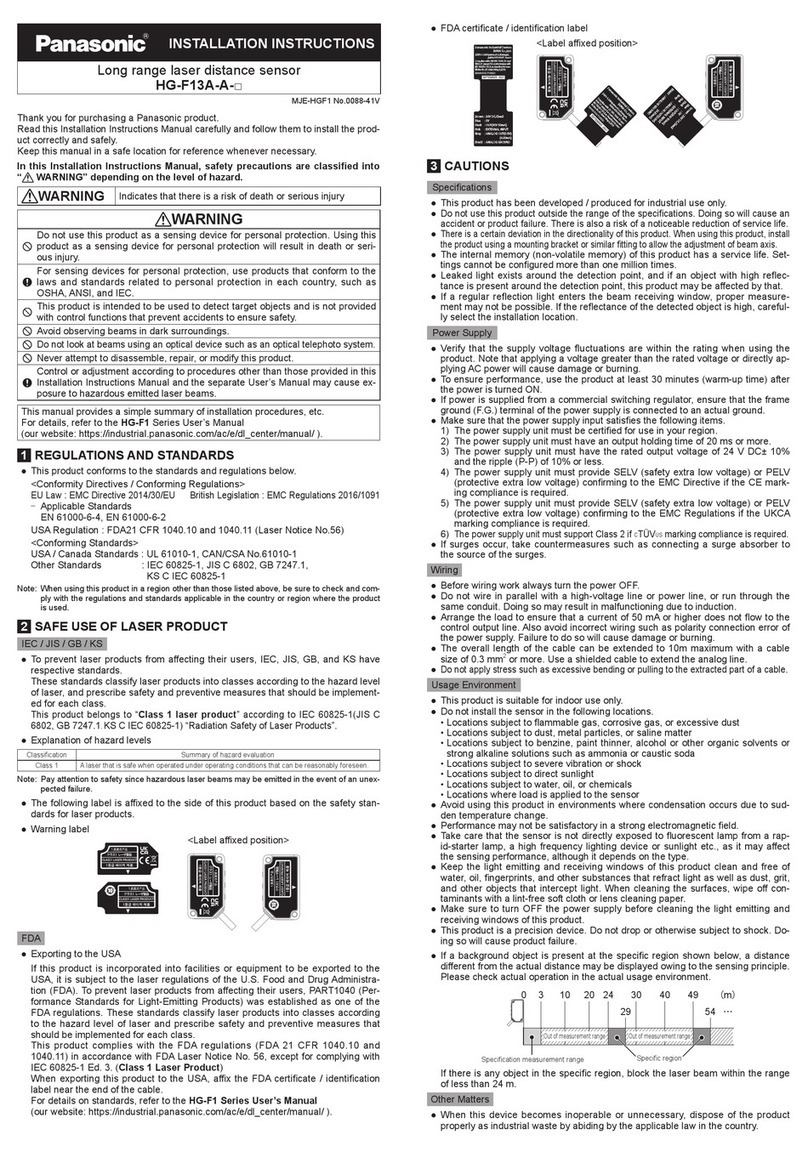
Panasonic
Panasonic HG-F13A-A-N installation instructions

Bolid Security Systems
Bolid Security Systems S2000-IP instruction manual
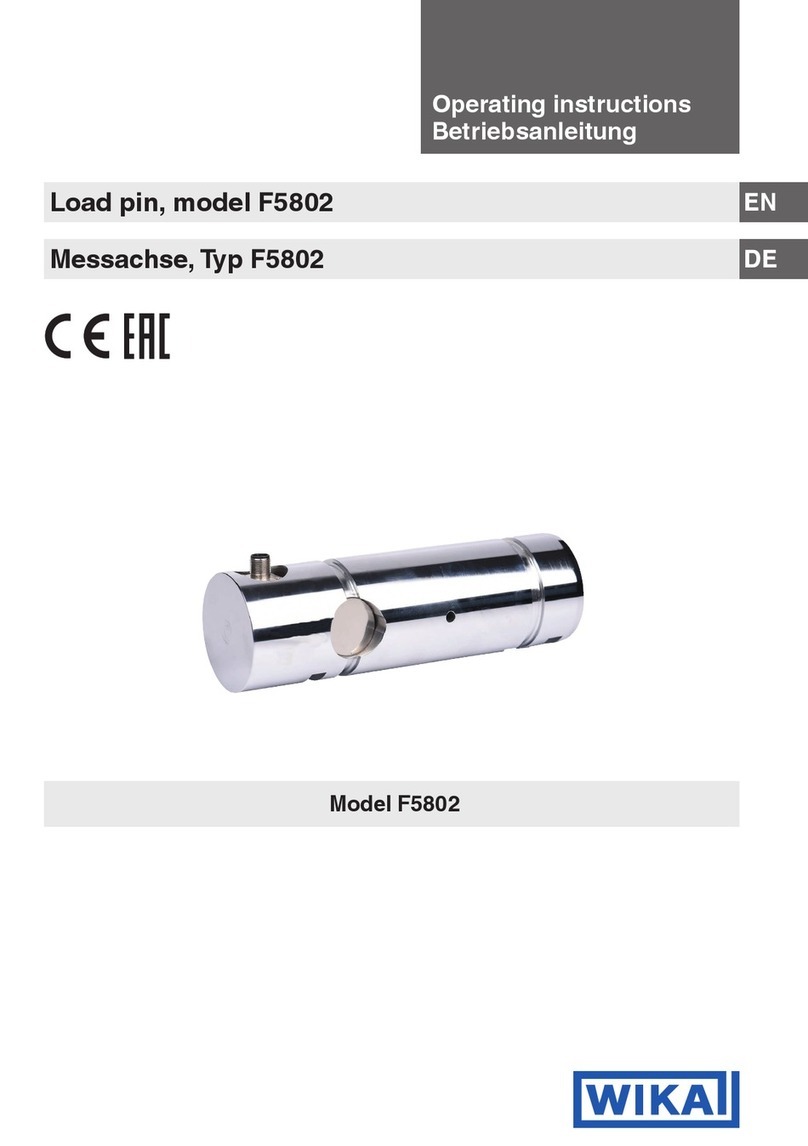
WIKA
WIKA F5802 operating instructions

Baumer
Baumer UNCK 09G8914/IO quick start guide

Ksenia
Ksenia UNUM installation manual

QOLSYS
QOLSYS IQ Motion QS1200-P01 installation manual
